3 Ways to Start a Robust Corporate Wellness Program
Posted on February 4th, 2020 Read time: 3 minutes

The perks and benefits that are attracting job seekers today have changed over the past two decades. Today, younger workers gravitate toward positions at companies they feel value their holistic worth, not just the expertise, education, and enthusiasm they bring to the table. As a business leader, you can set your organization apart by advertising more than job descriptions, candidate qualifications, and salary ranges. You can highlight the unique perks you offer, including your employee wellness program.
Modernizing your existing wellness program or implementing a brand-new company wellness program can help your organization stand out among the competition on job-posting sites. Wellness program offerings help small, midsized, and large companies grab the attention of the best talent.
How essential do young workers consider wellness initiatives when job hunting? A WorkplaceTrends Employee Engagement Study found that 61% of job seekers considered wellness programs at least a moderately important part of their search. Forty percent said they’d chosen not to work for a business specifically because it didn’t offer wellness initiatives.
Knowing this, it’s important to take a look at your corporate wellness program to ensure it best serves your hiring efforts and your loyal employees. But don’t stop there. Analyze what your competitors offer in comparison to what you offer, too. Be thorough and honest in your evaluation. It will help you improve the overall strength of your workforce.
If you’ve considered all aspects of your wellness program and think it needs a boost, implement the following three strategies, each of which focuses on how to create an employee wellness program that will last:
1. Stock the kitchen with healthy snacks.
For a simple, cost-effective way to kick-start your wellness program, make sure you have healthy snacks for employees. Plenty of workplaces budget to provide workers with free snacks, but not all of those snacks stack up nutritionally. Instead of providing sugary sodas, high-carb crackers, and salt-laden chips, give your employees healthier choices like nuts and fresh fruit.
Replacing unhealthy options sends a twofold message to your team. First, it helps you show employees that you care how they fuel their bodies. Secondly, it lets you subtly send a message that new wellness initiatives are on the horizon. By the time you roll out other parts of your wellness program, your staff will be primed to take on more healthy changes.
2. Create an anonymous wellness program survey.
Before you solidify the types of wellness offerings you will provide, consider sending a survey that employees can fill out anonymously. Leverage the employee feedback you receive to create a plan of action. For example, rank wellness program ideas from highest to lowest interest based on what respondents say. Employee buy-in is important, and when team members feel that their feedback was considered in the decision process, the wellness program will be better received.
Start by implementing only one or two items at a time. Taking it step by step prevents you — and your employees — from feeling overwhelmed by the organizational changes taking place. Moving forward, gather feedback on your wellness program from internal teams quarterly or semiannually, possibly using Start, Stay, Stop surveys. (That is, ask what programs the company should start offering, what existing programs should continue, and what programs should be discontinued.)
2. Identify company wellness program champions.
Successfully launching wellness initiatives, such as walking challenges and on-site flu shot and healthcare visits, requires a point person for each one. Supervisors and executives represent the most logical people to tap for their experience. But they have to buy into the wellness program concept first.
Before assigning champions or managers to oversee a program, ensure that the leaders understand the importance of their tasks. Clear, inclusive communication is key. Give top-level players space to push back and question ideas, and when they bring up important questions or concerns, make tweaks accordingly.
Running a thriving wellness program will help you attract and keep your best employees, and it will have other far-reaching effects, too. From reducing absences to fostering productivity, intentional health and wellness initiatives help organizations lead, disrupt, and succeed. And that bodes well for your future, company, and people.
Of course, a company wellness program is just one element of employee engagement. To learn more about how happy and engaged workers can improve your business, download a free employee engagement webinar by Innovative Employee Solutions.
Written By: Antonio Barraza, Business Development Representative and Contingent Workforce Expert at IES
Antonio Barraza is a business development representative and contingent workforce expert at Innovative Employee Solutions (IES), a leading global Employer of Record in more than 150 countries that specializes in contingent workforce solutions such as outsourced payrolling, independent contractor compliance, and contractor management services. Founded in 1974, IES has grown into one of San Diego’s largest women-owned businesses and has been named one of the city’s “Best Places to Work” for 10 years in a row.
Related Articles
Posted on February 4th, 2020 Read time: 3 minutes

The perks and benefits that are attracting job seekers today have changed over the past two decades. Today, younger workers gravitate toward positions at companies they feel value their holistic worth, not just the expertise, education, and enthusiasm they bring to the table. As a business leader, you can set your organization apart by advertising more than job descriptions, candidate qualifications, and salary ranges. You can highlight the unique perks you offer, including your employee wellness program.
Modernizing your existing wellness program or implementing a brand-new company wellness program can help your organization stand out among the competition on job-posting sites. Wellness program offerings help small, midsized, and large companies grab the attention of the best talent.
How essential do young workers consider wellness initiatives when job hunting? A WorkplaceTrends Employee Engagement Study found that 61% of job seekers considered wellness programs at least a moderately important part of their search. Forty percent said they’d chosen not to work for a business specifically because it didn’t offer wellness initiatives.
Knowing this, it’s important to take a look at your corporate wellness program to ensure it best serves your hiring efforts and your loyal employees. But don’t stop there. Analyze what your competitors offer in comparison to what you offer, too. Be thorough and honest in your evaluation. It will help you improve the overall strength of your workforce.
If you’ve considered all aspects of your wellness program and think it needs a boost, implement the following three strategies, each of which focuses on how to create an employee wellness program that will last:
1. Stock the kitchen with healthy snacks.
For a simple, cost-effective way to kick-start your wellness program, make sure you have healthy snacks for employees. Plenty of workplaces budget to provide workers with free snacks, but not all of those snacks stack up nutritionally. Instead of providing sugary sodas, high-carb crackers, and salt-laden chips, give your employees healthier choices like nuts and fresh fruit.
Replacing unhealthy options sends a twofold message to your team. First, it helps you show employees that you care how they fuel their bodies. Secondly, it lets you subtly send a message that new wellness initiatives are on the horizon. By the time you roll out other parts of your wellness program, your staff will be primed to take on more healthy changes.
2. Create an anonymous wellness program survey.
Before you solidify the types of wellness offerings you will provide, consider sending a survey that employees can fill out anonymously. Leverage the employee feedback you receive to create a plan of action. For example, rank wellness program ideas from highest to lowest interest based on what respondents say. Employee buy-in is important, and when team members feel that their feedback was considered in the decision process, the wellness program will be better received.
Start by implementing only one or two items at a time. Taking it step by step prevents you — and your employees — from feeling overwhelmed by the organizational changes taking place. Moving forward, gather feedback on your wellness program from internal teams quarterly or semiannually, possibly using Start, Stay, Stop surveys. (That is, ask what programs the company should start offering, what existing programs should continue, and what programs should be discontinued.)
2. Identify company wellness program champions.
Successfully launching wellness initiatives, such as walking challenges and on-site flu shot and healthcare visits, requires a point person for each one. Supervisors and executives represent the most logical people to tap for their experience. But they have to buy into the wellness program concept first.
Before assigning champions or managers to oversee a program, ensure that the leaders understand the importance of their tasks. Clear, inclusive communication is key. Give top-level players space to push back and question ideas, and when they bring up important questions or concerns, make tweaks accordingly.
Running a thriving wellness program will help you attract and keep your best employees, and it will have other far-reaching effects, too. From reducing absences to fostering productivity, intentional health and wellness initiatives help organizations lead, disrupt, and succeed. And that bodes well for your future, company, and people.
Of course, a company wellness program is just one element of employee engagement. To learn more about how happy and engaged workers can improve your business, download a free employee engagement webinar by Innovative Employee Solutions.
Written By: Antonio Barraza, Business Development Representative and Contingent Workforce Expert at IES
Antonio Barraza is a business development representative and contingent workforce expert at Innovative Employee Solutions (IES), a leading global Employer of Record in more than 150 countries that specializes in contingent workforce solutions such as outsourced payrolling, independent contractor compliance, and contractor management services. Founded in 1974, IES has grown into one of San Diego’s largest women-owned businesses and has been named one of the city’s “Best Places to Work” for 10 years in a row.






